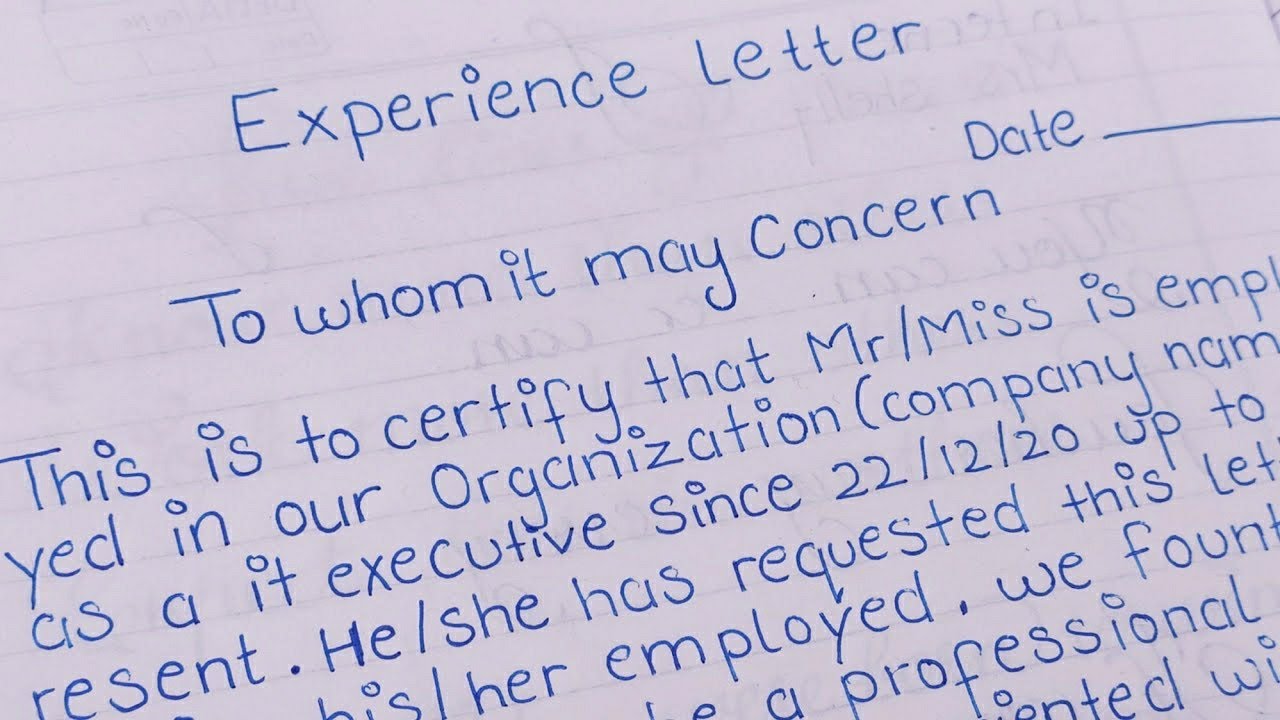An experience Letter is a formal letter issued by an employer for its parting employee. It is an essential document stating the time an employee spent with the employer, the employee’s skills, designation, and salary (optional). This letter is a handy document for the next employer as it helps him assess whether the employee has the skills and knowledge they claim of.
An experience letter can be imagined as a shorter version of a recommendation letter.
However, if you do not wish to go through the entire process, jump to the various experience letter templates by the prestigious HR Software!
Tips For Writing A Good Experience Letter
For the writing tips, let’s go section by section. Follow the tips step by step, and voila, you will land with a great experience letter.
#1: Always Use Your Company Letterhead
It is an official letter. That’s why it must always be written on the company’s official letterhead.
If your company doesn’t have one, you must ensure the company’s seal is present on the letter. Also, do not forget your contact information.
#2: Mention The Date You Issued The Letter
Mention the date of issuance in the upper right-hand corner of the letter. But take caution to write the date in full, in whichever format you choose.
#3: Start With A Salutation
Since you are writing this experience letter to the hiring manager of your parting employee, you need to address the letter to the hiring manager.
Please address them as ‘Dear Mr/Ms’ if you know their name.
If you don’t know their name, start the letter with a polite and professional, ‘To Whom It May Concern.’
#4: Use The Full Name Of The Employee
Please remember to use the employee’s full name from the records of the company.
That way, the new company will find it easier to match its records with the employee’s name.
#5: Mention The Employee’s Title/ Designation
Mention the employee’s title or designation in your organisation.
Suppose the employee joined at a lower position. Do explain why they were promoted to the new position.
#6: Please Include Your Company’s Name
Often companies operate under a different name than their legal business names. In such a case, include both names.
This step is essential because it helps the receiver establish the letter’s authenticity.
#7: Mention The Employment Period Of The Employee With You
Please include the serving time of the employee in your organisation in the letter.
If they are still employed with you, you can write, ‘from 1st April 2022 till present.’ Or if you know their end date, then mention the last day’s date in place of present.
Lastly, if they have already left the organisation, you quickly have the start and end dates of the employee.
#8: Write A Mini Description Of The Employee
This is one of the most helpful sections of the experience letter.
Draft a brief description of the employee’s work habits, knowledge, skills, experience, performance, strengths, etc.
In an ideal case, ask the employee for a copy of the job description and align your description accordingly.
#9: Please Ensure To Add A Positive Statement And The Reason For Them Going
You can mention that the employee is leaving the company of their own accord and that you wish them all the best for their future.
If the employee was laid off, please mention that it was due to budgetary constraints and not the employee’s performance.
This acknowledges the new employer that the employee leaves your company in good standing.
#10: Close With An Appropriate Signature Line
Lastly, close the letter with an appropriate closing phrase, your signature, your printed name, and your designation.
Next, add your company’s seal.
Lastly, if you have not included it in a heading, mention the name and address of the organisation.
And not to forget, since an experience letter is an official document, preferably an administrative officer should write the letter.
Also Read: Experience Letter: Definition, Importance, Tips And More
Undoubtedly, this is a complicated process. Therefore various HR Software provide you with a library of letter templates in all kinds and colours!
